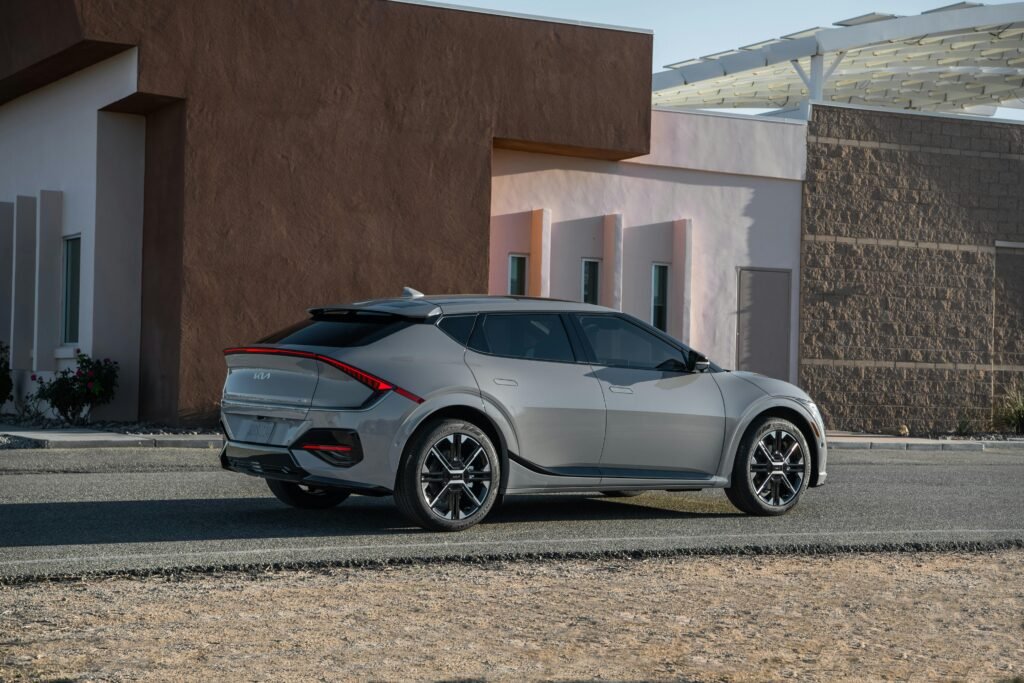The Indian SUV market is experiencing a significant boom, outpacing the growth of other passenger vehicle segments. SUVs now represent a commanding share of the overall passenger vehicle market india
- Changing lifestyle aspirations: SUVs have transitioned from purely utility vehicles to status symbols, reflecting a desire for success and upward mobility among the growing middle class in India.
- Evolving infrastructure: Improvements in road infrastructure across both urban and rural areas make SUVs a more practical choice for daily driving and diverse terrains.
- Expanded price range: The introduction of affordable entry-level SUVs, starting around ₹7 lakh (approx. USD 8400), has broadened the market and made SUVs accessible to a wider consumer base.
- Enhanced features: Modern SUVs offer advanced safety systems, connectivity features, and improved comfort, adding value at competitive price points compared to sedans.
Top selling SUVs in India (June 2025)
The SUV sales boom encompasses various categories, with compact and mid-size SUVs leading the way.
- Hyundai Creta: This model remains the best-selling mid-size SUV in India, consistently demonstrating strong demand. It reclaimed the top spot in June 2025.
- Maruti Suzuki Brezza: A popular choice in the compact SUV segment, the Brezza offers affordability and caters to the needs of both private and fleet buyers.
- Mahindra Scorpio: Known for its ruggedness and consistent performance, particularly in semi-urban and rural areas. The Scorpio Classic and Scorpio N models contribute significantly to Mahindra’s overall SUV sales.
- Tata Nexon: The Tata Nexon, previously India’s best-selling SUV for three consecutive years (FY22-24), continues to be a strong contender in the compact SUV segment, although it has dropped to seventh position in H1 FY25.
- Tata Punch: This compact SUV has emerged as a major disruptor in the market. It is available in petrol, CNG, and electric variants and has consistently outsold its sibling, the Nexon.
- Maruti Suzuki Fronx: This compact SUV has witnessed significant sales success, particularly within Maruti Suzuki’s Nexa channel.
- Mahindra XUV700: A premium SUV offering advanced features and technology, contributing to Mahindra’s strong performance in the segment.
- Toyota Urban Cruiser Hyryder: This model has gained traction in the market, even surpassing sales of some competitors like the Maruti Grand Vitara and Kia Seltos.
Factors influencing SUV purchases
- Financing options: Extended loan tenures (up to 7 or 8 years for EVs) and lower down payment options make SUVs more accessible to a wider range of buyers.
- Rural market expansion: Improved financing and increasing distribution in semi-urban and rural areas are driving SUV sales in these new markets.
- New ownership models: Leasing and subscription services are becoming popular alternatives to traditional ownership, particularly in metropolitan areas.
Manufacturer strategies
- Portfolio reorientation: Automakers are prioritizing SUV development and reducing investment in sedans.
- Feature democratisation: Premium features are being introduced in more affordable SUV models to enhance their value proposition.
- Powertrain diversity: Manufacturers are offering a range of powertrain options, including petrol, diesel, CNG, and electric, to cater to diverse customer preferences.
- Design focus: Bold and distinctive designs play an increasingly important role in attracting buyers to the SUV segment.

Future outlook
The Indian SUV market is poised for continued expansion in the near and medium term, driven by several factors:
- New model pipeline: Manufacturers are planning several new SUV launches across different price points.
- Electric transition: The electric vehicle segment is seeing rapid growth, with SUVs like the Tata Nexon EV and MG ZS EV leading the way.
- Premiumization trend: Consumers are increasingly willing to spend more on desirable and feature-rich SUVs.
Upcoming SUVs in 2025
Several new and updated SUVs are expected to launch in India in 2025 and beyond:
- Volvo XC60 2025: Expected Launch: August 1, 2025, Expected Price: ₹70 Lakh*
- BMW iX 2025: Expected Launch: August 14, 2025, Expected Price: ₹1.45 Cr*
- Audi Q6 e-tron: Expected Launch: August 15, 2025, Expected Price: ₹1 Cr*
- Mahindra BE 07: Expected Launch: August 15, 2025, Expected Price: ₹29 Lakh*
- Maruti Brezza 2025: Expected Launch: August 15, 2025, Expected Price: ₹8.50 Lakh*
- Mahindra XEV 7e: Expected Launch: August 2025, Expected Price: ₹21 – 30 Lakh*
- Mahindra XUV 3XO EV: Expected Launch: August 2025, Expected Price: ₹15 – 18 Lakh*
- Tata Safari EV: Expected Launch: August 2025, Expected Price: ₹26 – 30 Lakh*
- Tata Sierra EV: Expected Launch: September 18, 2025, Expected Price: ₹25 – 30 Lakh*
- Maruti Suzuki e Vitara: Expected Launch: September 3, 2025, Expected Price: ₹20 – 25 Lakh*
- Mahindra New Bolero: Expected Launch: October 2025, Expected Price: ₹10 – 12 Lakh*
- Hyundai New Venue: Expected Launch: October 2025, Expected Price: ₹7.90 – 14 Lakh*
Challenges
Despite the robust growth in the Indian SUV market, certain challenges could affect future sales:
- Charging infrastructure gaps: The lack of widespread charging infrastructure remains a significant concern for potential electric SUV buyers.
- Battery material supply chains: Dependence on imports for battery materials could hinder the growth of the electric SUV segment.
- Cost parity with ICE models: Electric SUVs may not yet be at cost parity with their internal combustion engine (ICE) counterparts, posing a challenge for price-sensitive consumers.
- Rural liquidity constraints: Persistent rural liquidity issues could impact sales, particularly in the mass-market segments.
- Rising interest rates: Higher interest rates could deter buyers and make financing more expensive.
- Stringent lending policies: Entry-level buyers could face difficulties securing financing due to stricter lending policies.
- Market uncertainty: Economic uncertainties may continue to impact consumer confidence and business investment.
The Indian SUV market is dynamic and undergoing significant transformation. While strong growth is expected to continue, addressing challenges related to infrastructure, cost, and financing will be crucial for the segment’s long-term success.
